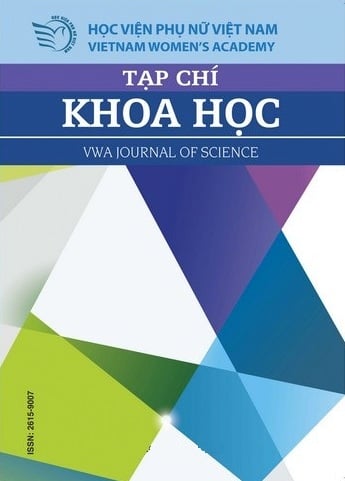[1] ActionAid. (2011). Female migrants: the journey to find opportunities. Hanoi: ActionAid.
[2] Bélanger, D., Le, D. B., & Khuat, H. T. (2005). Transnational Migration, Marriage and Trafficking at the ChinaVietnam border. In I. Attané, & C. Z. Guilmoto, Watering the neighbour’s garden: the growing demografic female deficit in Asia (pp. 393-426). Paris: CICRED
[3] Boyd, M., & Grico, E. (2003). Women and migration: Incorporating Gender into International Migration Theory. The online journal of the Migration Policy Institute .
[4] Carling, J. (2005). Gender dimensions of international migration. Global Commission on International Migration . Geneva : Global Commission on International Migration .
[5] Donato, K. M., Gabaccia, D., Holdaway, J., Manalansan, M., & Pessar, P. R. (2006). A Glass Half Full? Gender in Migration Studies. International Migration Review, 40 (1), 3-26.
[6] Fleury, A. (2016). Understanding women and migration: A literature review . Newyork: KNOMAD .
[7] Huong, L., & Van, K. (2015, 11 17). Journal of Solidarity. Retrieved 5 13, 2018 from www.daidoanket.vn: http:// daidoanket.vn/phap-luat/lao-dong-di-cu-trai-phep-thuc-trang-va-giai-phap-tintuc75501
[8] IOM. (2011). Giải thích thuật ngữ về di cư - Tái bản lần 2. Geneva: Tổ chức di cư Quốc tế (IOM).
[9] Lee, E. S. (1966). A Theory of Migration. Demography, 3 (1), 47-57.
[10] Piper, N. (2005). Gender and migration: A paper prepared for the Policy analysis and Research Programme of the Global commission on International Migration. Geneve: GCIM.
[11] Piper, N. (2012). Giới và Di cư ở Đông Nam Á. In Đặng Thị Hồng Xoan, Giới và di dân - Tầm nhìn Châu Á (pp. 32-51). Hà Nội: NXB ĐHQG TP Hồ Chí Minh.
[12] Schrover, M., Leun, J. V., Lucassen, L., & Quispel, C. (2008). Introduction: Illegal Migration and Gender in a Global and Historical Perspective. In M. Schrover, J. V. Leun, L. Lucassen, & C. Quispel, Illegal Migration and Gender in a Global and Historical Perspective (pp. 9-32). Amsterdam: Amsterdam University Press.
[13] Đặng Nguyên Anh. (2012). Giới và quyết định di cư: tiếp cận lý thuyết và liên hệ với thực tiễn.
[14] Nguyễn Thị Hồng Xoan. (2012). Giới và di dân tầm nhìn châu Á. Giới và di dân tầm nhìn châu Á. Hồ Chí Minh: ĐH Quốc Gia TP. Hồ Chí Minh.
[15] UN. (2010). Di cư trog nước, cơ hội và thách thức đối với sự phát triển kinh tế - xã họi ở Việt Nam. Hanoi: UN.
[16] Vũ Trường Giang. (2016), Báo cáo tổng hợp kết quả nghiên cứu đề tài cấp Bộ năm 2016: Di cư xuyên biên giới của các tộc người thiểu số tác động đến ổn định và phát triển kinh tế - xã hội ở vùng Tây Bắc Việt Nam hiện nay. Hà Nội.
